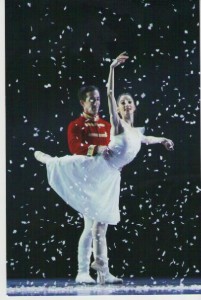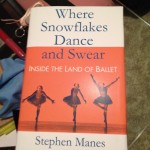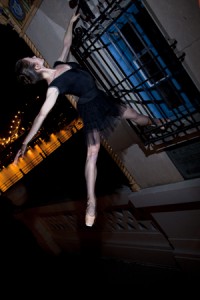We are pleased to welcome back guest contributor Gigi Berardi, dance author and critic, who has written over 150 articles and reviews that have appeared in Dance Magazine, Dance International, The Los Angeles Times, among others. She is also a natural and social scientist currently on the faculty of Western Washington University.
Her academic and background and performing experiences allow her to combine her passion for both dance and science. Her fifth book, “Finding Balance: Fitness and Training for a Lifetime in Dance” is in it’s second printing, and is one I highly recommend especially for younger dancers. Gigi’s master degree thesis in dance, from UCLA, focused on older dancers who were able to continue dancing and performing well past the age when most have to retire because of injuries – i.e, what were they doing differently that kept them actively performing into their 50’s, 60’s,70’s? Her current book project is called “A Cultivated Life” — look for it soon!
– Jan Dunn, MS, Dance Wellness Editor
_______________________________________________________
by Gigi Berardi, MA
To be honest, I don’t like using the term, “older dancer” to describe dancers over 30 or 40 or 50. I’m not exactly sure why (it connotes “less than,” not as compelling?) – although I used it mightily in my Masters thesis at UCLA, developing “Case Studies of Older-aged Dancers and the Factors that Contribute to the Longevity of Their Performing Careers” (UCLA, 1989). But, the “older-aged” part now, for me, is about psychological and emotional staying power in dance, as I describe in “Bill Evans: “Changing the Body and the Geography of Modern Dance” (Dance Magazine, pages 38 – 43, October, 2003) and elsewhere, see: http://myweb.facstaff.wwu.edu/gberardi/performing_articles.shtml.
It seems to me that for most dancers in their 40s and older, the important questions for them are, “do they feel like they can still do what they want to do in a particular role?” and “do they want to?”
Few dancers are being taken off the stage, fighting and kicking, and screaming “Nooooooo…” I think that what happens, over time, is more subtle (and, if you will, nefarious). They begin to have fewer opportunities for lead roles (for whatever reason, but I must say that audience demand for younger, thinner, and those more capable of dizzying pyrotechnics may comprise a sensibility that artistic director are particularly aware of). Further, past injuries may be catching up with them, other conditions in the work place may be undesirable (re: physical space, etc.), and they may have other personal constraints (wanting to raise a family, spending more time with their children) or financial ones (wanting to be financially solvent at the advanced age of 45, say).
From my perspective as a dance critic and using a lens of physicality, as a career progresses, it is nimbleness and stamina that seem to be on the wane. Strength and flexibility, emotional prowess, commitment to conditioning (for me right now, as a “mature” dancer, Thai kick boxing is my passion) and a diet high in good fats and low in sugar – all seem to characterize dancers with staying power. Nimbleness and stamina are the more illusive traits.
What to do, then, for a “lifetime in dance” (the subtitle of both editions of my Finding Balance book)?
- feed that mind with good cholesterol and saturated fat (for more, see my forthcoming book, A Cultivated Life, 2014) that coat the myelin sheaths in and around and of all the parts of the central nervous system,
- get some sun, which helps in all of the above,
- find your passion in conditioning – martial arts or Franklin Method ©, or Pilates, or step aerobics, and above all,
- keep dancing, which is the best way to build character and flexibility and strength and stamina in all that dancers do.
Or, dancers might want to look for a job in Europe where all (above) seems easier. See: “From Dance to Danse: Why so many American Dancers are Heading to Europe” (Dance Magazine, 2009, at website mentioned in this article).

Gigi Berardi holds a MA in dance from UCLA. Her academic background and performing experience allow her to combine her interests in the natural and social sciences with her passion for dance, as both critic and writer. Over 150 articles and reviews by Ms. Berardi have appeared in Dance Magazine, Dance International, the Los Angeles Times, the Anchorage Daily News, The Olympian, The Bellingham Herald, and scientific journals such as BioScience, Human Organization, and Ethics, Place, and Environment. Her total work numbers over 400 print and media pieces. Her public radio features (for KSKA, Anchorage) have been recognized by the Society of Professional Journalists. She has served on the Board of Directors of the Dance Critics Association, and is a member of the American Society of Journalists and Authors, as well as Book Review editor for The Journal of Dance Medicine & Science. A professor at Western Washington University, she received the university’s Diversity Achievement Award in 2004. Her fifth book, Finding Balance: Fitness and Training for a Lifetime in Dance, is in its second printing. Her current book project is titled A Cultivated Life.
Email: Gigi.Berardi@wwu.ed<mailto:Gigi.Berardi@wwu.edu>u
Website: http://myweb.facstaff.wwu.edu/~gberardi and http://www.gigiberardi.com/
Blogs: http://blog.gigiberardi.com/ and http://resilientfarmsnourishingfoods.blogspot.com/












